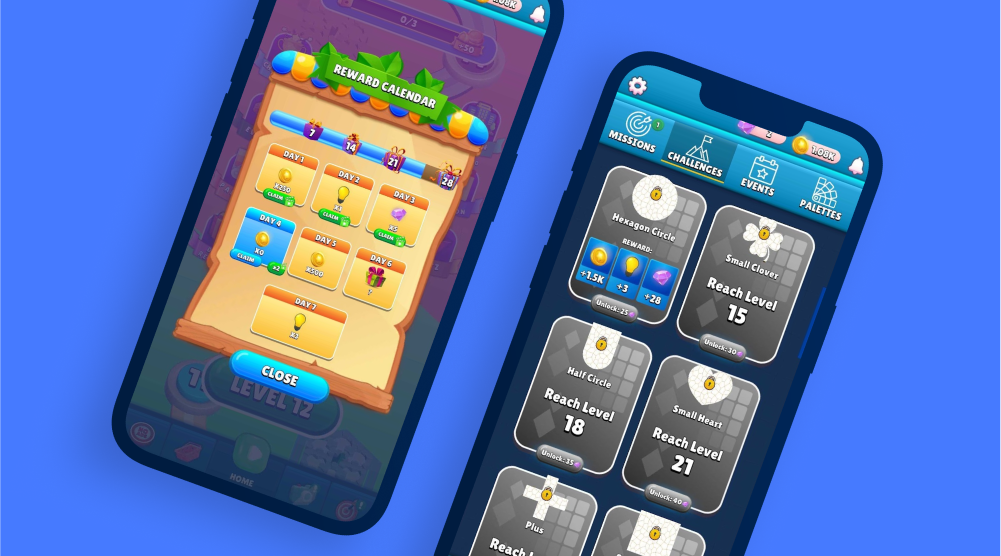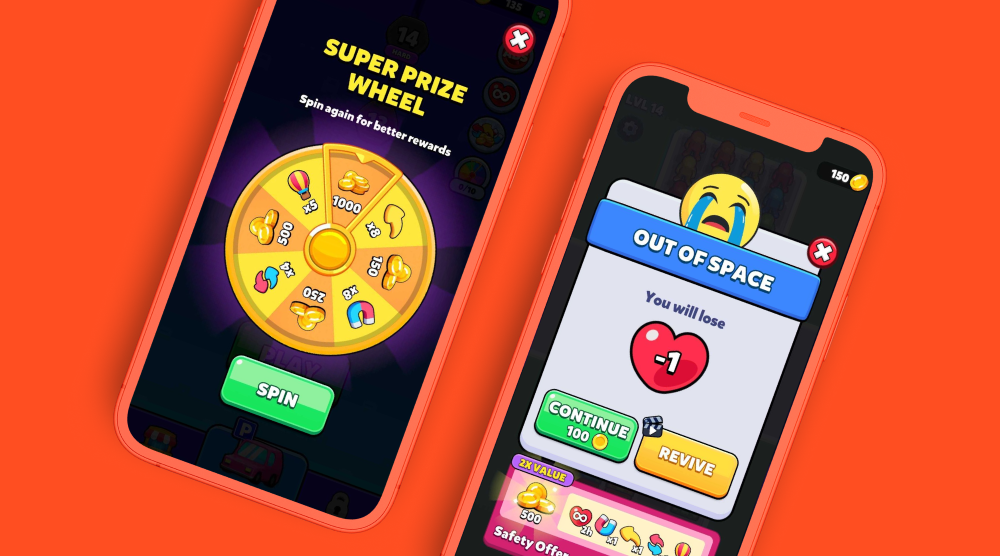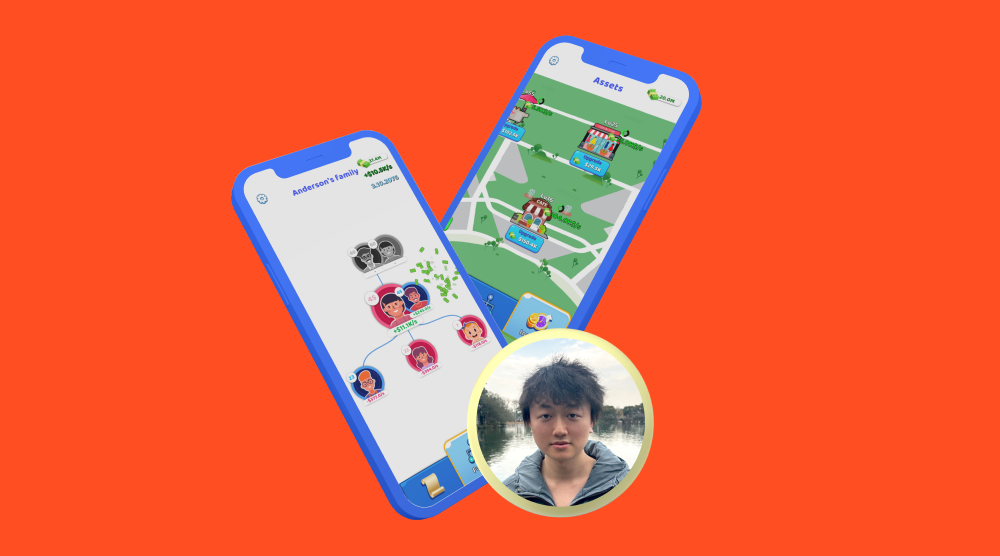Whether you’re designing a hyper-casual game with quick and fun gameplay, or you’re creating a hybrid-casual game with a deeper game loop and a balanced game economy, boosting your retention rate is key to your game’s growth. And D1-D3 and D3-D7 can serve as guideposts for building out your strategy.
Finding the holy grail of retention might seem overwhelming at first, but it really doesn’t have to be complex. We’re breaking down how to grow your retention with 6 top tips for these stages of game development, starting with D1-D3.
Lock in early retention in D1- D3
1. Know what to look for
With hyper-casual games, the quick and fun game loop means that you have a shorter time frame of around 7 days to hook players early and build out ways to make sure they keep playing.
On the flip side, the deeper content found in hybrid-casual games encourages players to keep coming back over a longer period of time. While LTV is longer in hybrid games and D30-D60 are important, early retention is just as important.
For hyper-casual and hybrid-casual games, here are some retention-based KPIs you should try to hit:
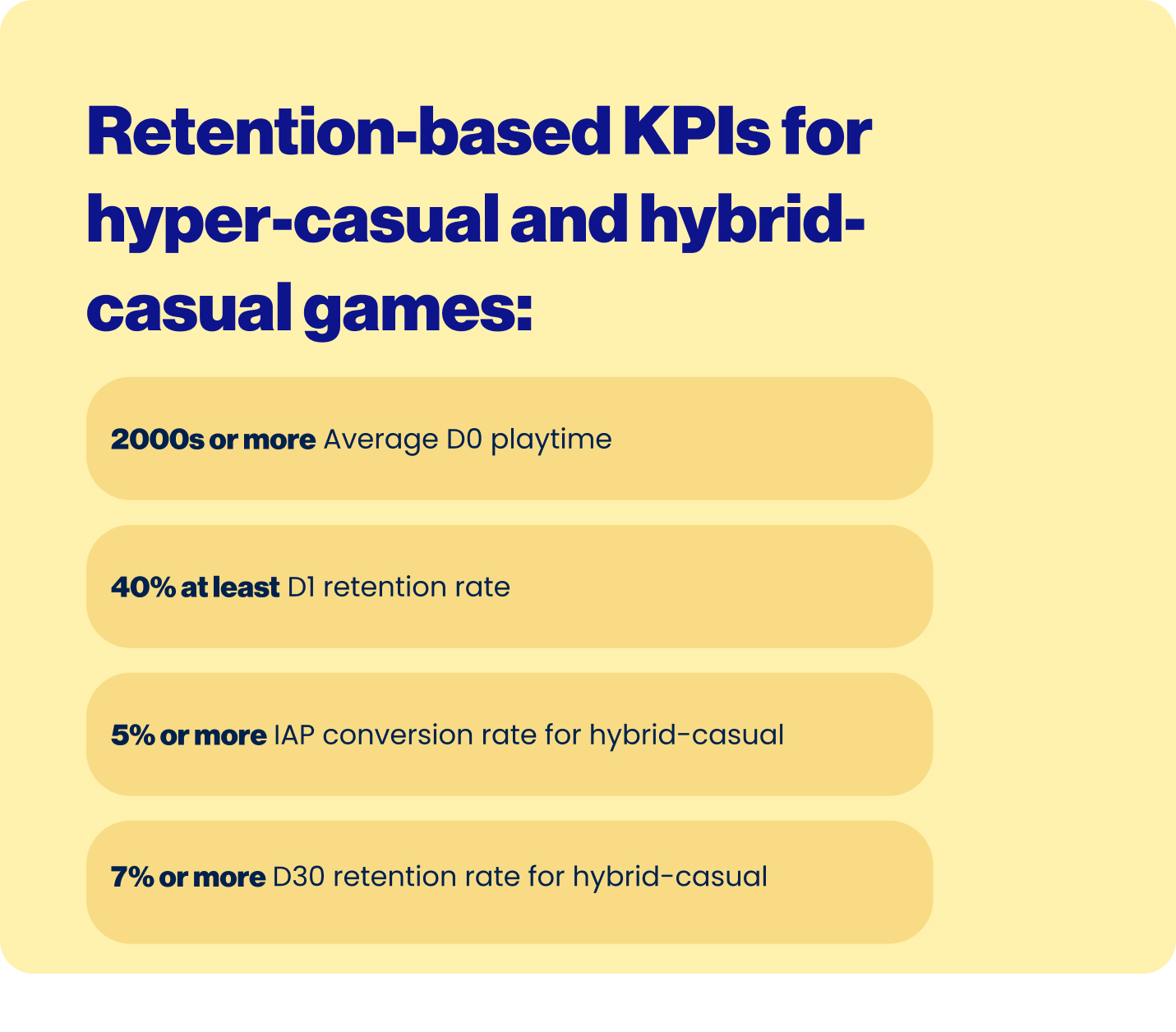
2. Understand your audience
Understanding your audience is just as important for retention as killer graphics and epic game design. The early days of your game (D1-D3) are the best time to dive deep into the minds of your players.
Maybe some players want to beef up their stats by progressing in the game, while others are more interested in a fun story on a platform where they can express themselves creatively.
Because every player is different, your bag of retention tricks, sweet incentives, and gameplay goals won’t work for everyone. Your best bet is to become a player yourself - see what makes you say ‘just one more level,’ and build on that to keep players coming back.
3. Find the fun
First impressions count, so your game’s UX needs to be clear and entertaining right off the bat. For both hyper-casual and hybrid-casual games, early retention strategies are all about fun. The more playtime you can get with a player’s first session, the more likely they’ll keep coming back.
In D1-D3, a strong core will peak a player’s interest and crack the door wide open for more fun-filled content later on, so start off easy with a goal that’s impossible to fail, and then gradually build in challenges to make the goal more difficult to achieve. Players should be able to understand your game’s mechanics and know that they’ll get rewarded for their gameplay. In the classic hyper-casual game, My Mini Mart, quick and fun tasks like restocking tomatoes and operating the register are rewarded with points. New content challenges, like stocking other types of groceries to earn more points, are added as the player progresses.
4. Add daily rewards
Let’s face it, the promise of extra rewards gets players glued to your game. Sprinkling in daily rewards starting from D1 taps into a player’s burning desire to keep their momentum going. How you implement this mechanic differs by genre, so let’s break it down.
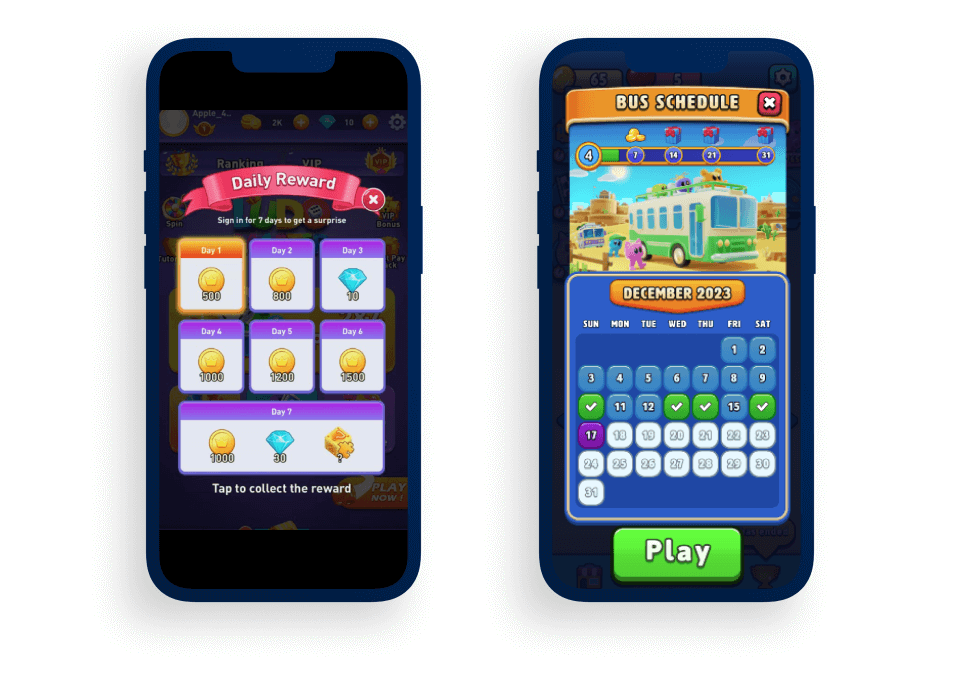
In general, there’s not a big range of reward types offered in hyper-casual games. That’s because players are less emotionally engaged with hyper-casual games. Even though the reward will usually be the same from level to level, the amount will increase over time – for example, the number of coins a player gets will grow as they come back to play each day.
On the other hand, daily rewards in most hybrid-casual games are bigger and better from one day to another. The idea here is for the player to reach D7 or D14 because the next reward is even better than the previous one, providing additional incentive for the player to retain their progression in the game.
Implement a gradual unlock strategy in D3 - D7
Now that you’ve gotten your players’ attention with a fun and engaging core game loop, it’s time to move on to the second stage of boosting retention in hyper-casual and hybrid-casual games: finding ways to keep their interest. Here’s how to implement a gradual unlock strategy in D3-D7.
5. Focus on balanced level design
At this stage, boosting retention hinges on how interesting your levels are, and whether your design allows for true level progression. Balanced level design is not just about giving players the chance to rack up levels - it’s also about providing ways to uncover new challenges over time as an incentive to come back. Fresh twists and turns keep players interested while achievements and milestones offer them a sense of progression.
New mechanics should focus on design and finding the ‘flow state,’ or the balance, where the difficulty curve is challenging enough to keep your players engaged, but not too challenging that they will stop playing.
6. Keep adding new content
Next, adding in meta features gives players a long term goal to encourage them to keep playing. Special gifts, daily missions, and tournaments can each make players hungry for more play time.
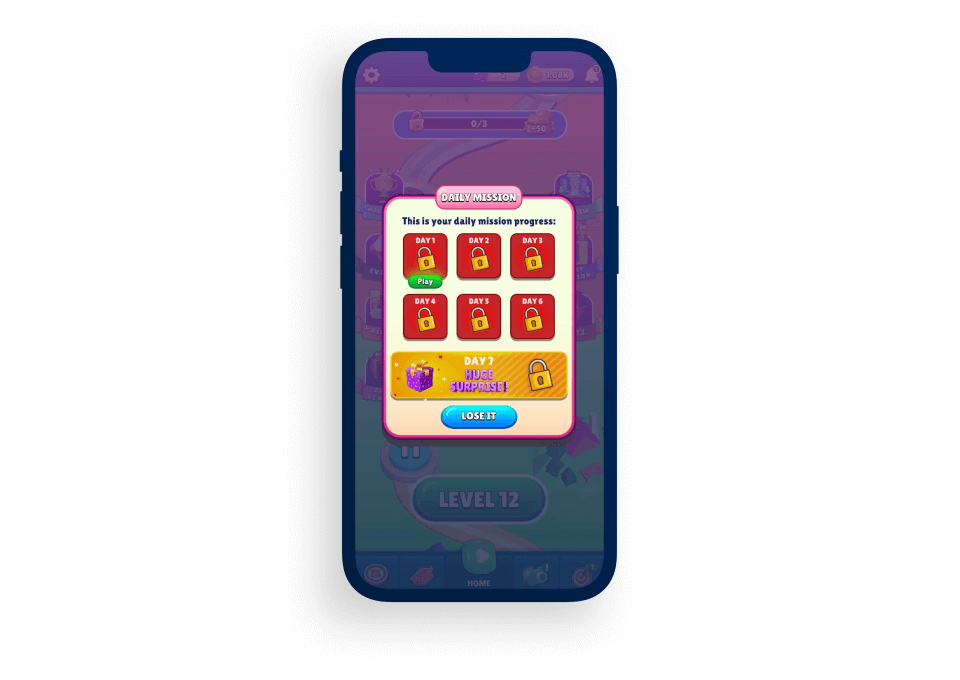
For example, in Build A Queen, the core game mechanics involve turning the main character into a queen. These simple core mechanics are what gets players’ attention during D1-D3, but the addition of new meta, like designing the queen’s bedroom, unlock when players reach higher levels and collect enough money. These additional meta layers available during D3-D7 are what get players to stay in the game and keep coming back over time.
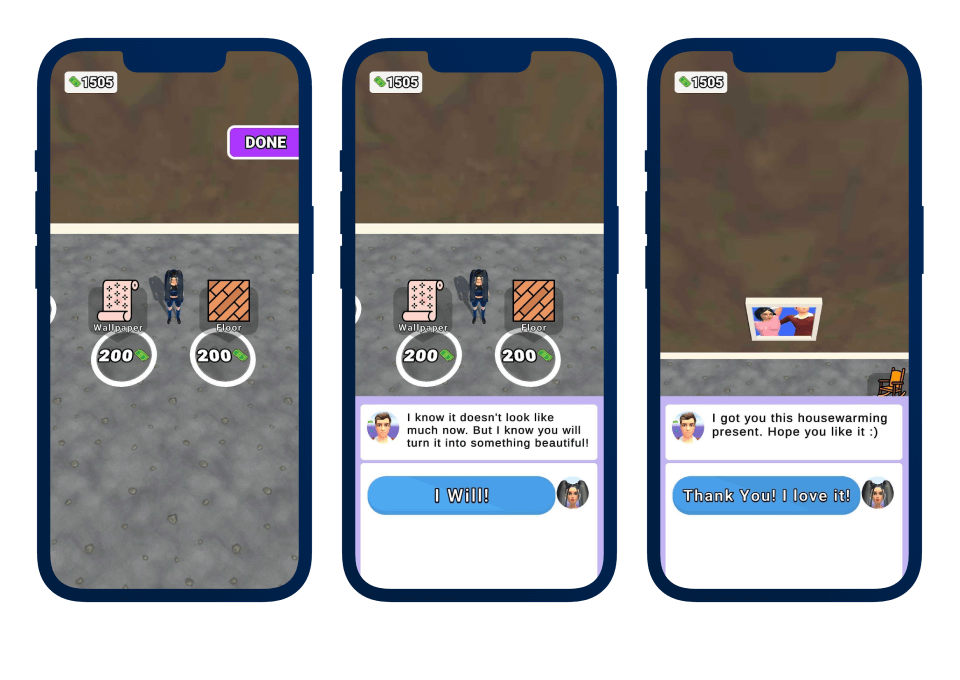
Let’s take another example. In the hyper-casual game, Color Merge Puzzle, a reward calendar offers players content-based incentives to keep coming back to paint their puzzle. When players reach higher levels, they unlock new types of rewards. For example, when they get to level 10 on D5, players unlock a special sparkly color palette to use.
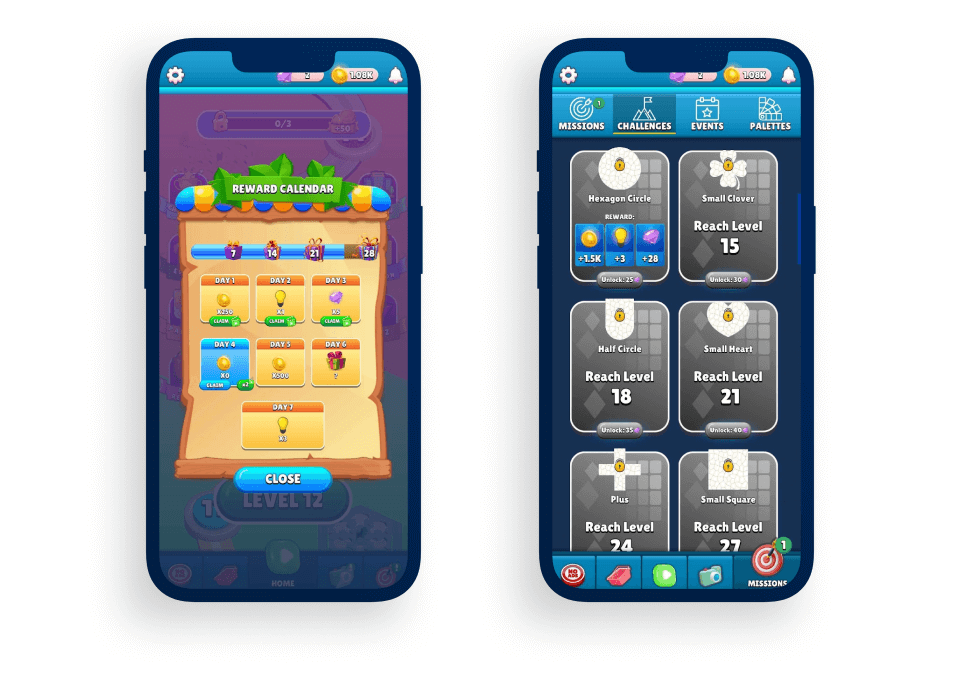
Want to know more about how to boost retention for hybrid games? Check out part 2 in our series:
Let's put these tips to good use
Publish your game with Supersonic
